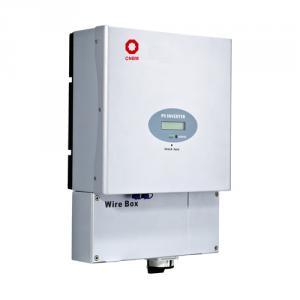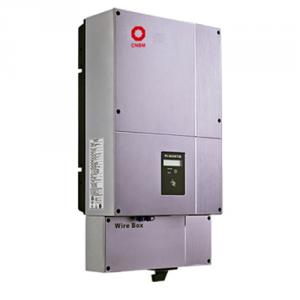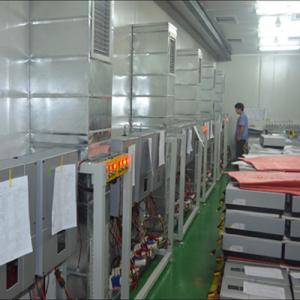Grid Connected Solar Inverter 2000W
- Loading Port:
- Shenzhen
- Payment Terms:
- TT
- Min Order Qty:
- 1 pc
- Supply Capability:
- 1-1200 Per month pc/month
OKorder Service Pledge
OKorder Financial Service
You Might Also Like
Grid Connected Solar Inverter 2000W
CNBM International Corporation (CNBM International) is the most important trading platform of CNBM Group Corporation, a state-owned company under the direct supervision of State-owned Assets Supervision and Administration Commission of the State Council.
The Grid Connected Solar Inverter we can offer is 1.5kw to 20kw.
Introduction of Grid Connected Solar Inverter 2000W
Maximum efficiency of 97.5% and wide input voltage range
Integrated DC switch-disconnected
MTL-String
Sound control
Bluetooth/RF technology /Wi-Fi
Transformerless GT topology
5 years warranty (10 years as optional)
Datasheet of Grid Connected Solar Inverter 2000W
Model | CNBM-1500-US | CNBM-2000-US | CNBM-3000-US |
Input data |
| ||
Max. DC power | 1800W | 2300W | 3200W |
Max. DC voltage | 450V | 500V | 500V |
Start voltage | 150V | 150V | 150V |
PV voltage range | 100V-450V | 100V-500V | 100V-500V |
Number of MPP trackers/strings per MPP tracker | 1/1 | 1/2 | 1/2 |
Max. input current of the MPP tracker | 12A | 14A | 17A |
Output data |
| ||
Nominal AC output power | 1500W@208Vac 1650W@240&277Vac | 1800W@208Vac 2000W@240&277Vac | 2500W@208Vac 2800W@240&277Vac |
Max. output current | 8A/7.8A/6.8A | 9.7A/9.4A/8.2A | 15A/14.2A/12.3A |
AC nominal voltage; range | Default:240V single phase optional:208,240or277 single phase 183-228@208V 211-264V@240V 244-305@277V | ||
AC grid frequency; range | 60Hz;59.3-60.5Hz | 60Hz;59.3-60.5Hz | 60Hz;59.3-60.5Hz |
Phase shift (cosφ) | 1 | 1 | 1 |
THDI | <3% | <3% | <3% |
AC connection | Single phase | Single phase | Single phase |
Efficiency |
| ||
Max. efficiency | 97% | 97% | 97% |
CEC efficiency | 96% | 96.50% | 96.50% |
MPPT efficiency | 99.50% | 99.50% | 99.50% |
Protection devices |
| ||
Output overvoltage protection-varistor | yes | yes | yes |
Ground fault monitoring | yes | yes | yes |
Grid monitoring | yes | yes | yes |
General Data |
| ||
Dimensions (W / H / D) in mm | 360/465/165 | 360/465/165 | 360/465/165 |
Weight | 14.6KG | 15.1KG | 15.9KG |
Operating temperature range | -25...+60°C | -25...+60°C | -25...+60°C |
Altitude | Up to 2000m(6560ft) without power derating | ||
Consumption: operating(standby) / night | <5W / < 0.5 W | <5W / < 0.5 W | <5 W / < 0.5 W |
Topology | Transformerless | ||
Cooling concept | Natural | Natural | Natural |
Enclosure | Type 3R | Type 3R | Type 3R |
Features |
| ||
DC connection: | Screw terminal | Screw terminal | Screw terminal |
AC connection: | Screw terminal | Screw terminal | Screw terminal |
display | LCD | LCD | LCD |
Interfaces: RS485/RS232/Bluetooth/RF/Zigbee | yes/yes/opt/opt/opt | ||
Warranty: 5 years/ 10 years / 15 years | yes /opt | yes /opt | yes /opt |
Certificates and approvals | UL1741,UL1998 IEEE 1547, CSA C22.2 No.107.1-1,FCC Part15(Class A&B) | ||
Picture 1 Factory of Grid Connected Solar Inverter 2000W
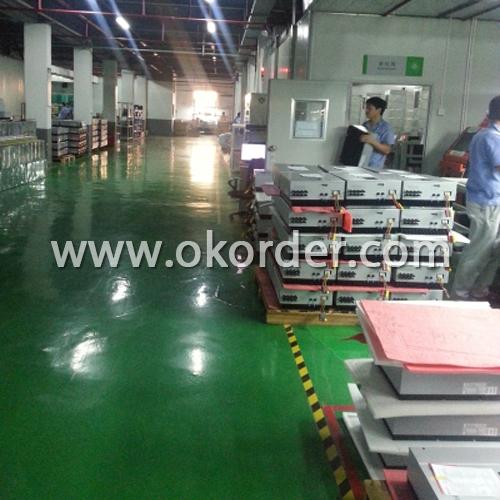
Picture 2 Package of Grid Connected Solar Inverter 2000W
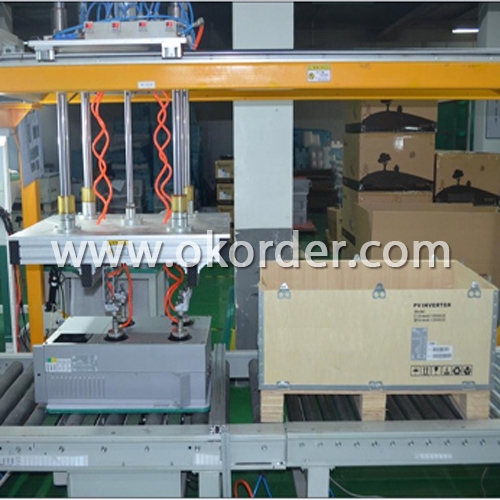
- Q:Can a solar inverter be used with a three-phase electrical system?
- Yes, a solar inverter can be used with a three-phase electrical system. In fact, many commercial and industrial solar installations use three-phase inverters to convert the direct current (DC) power generated by solar panels into alternating current (AC) power that can be used by the electrical grid. This allows for efficient power conversion and distribution in three-phase systems, which are commonly used in larger electrical installations.
- Q:Can a solar inverter be used in systems with different module orientations?
- Yes, a solar inverter can be used in systems with different module orientations. Solar inverters are designed to convert the DC power generated by solar panels into AC power that can be used by household appliances or fed back into the grid. They can accommodate various module orientations, including different tilt angles or orientations such as landscape or portrait. However, it is important to note that the overall efficiency of the solar system may be affected by the module orientations and their alignment with the sun.
- Q:What is the role of a maximum power control feature in a solar inverter?
- The role of a maximum power control feature in a solar inverter is to optimize the energy output of the solar panels by constantly tracking and adjusting the operating point to ensure that the system operates at its maximum power point (MPP). This feature helps to increase the overall efficiency of the solar system and maximize the amount of energy that can be harvested from the sun.
- Q:Can a solar inverter be used for three-phase power systems?
- Yes, a solar inverter can be used for three-phase power systems. Three-phase solar inverters are specifically designed to convert the DC power generated by solar panels into AC power for three-phase electrical systems. These inverters are capable of handling the higher voltage and power requirements of three-phase systems, making them suitable for commercial and industrial installations.
- Q:Can a solar inverter be used in conjunction with a battery management system?
- Yes, a solar inverter can be used in conjunction with a battery management system. In fact, many solar energy systems utilize both components together to optimize energy generation, storage, and usage. The solar inverter converts the DC power generated by solar panels into AC power for immediate use or to be fed back into the grid. Meanwhile, the battery management system manages the charging, discharging, and overall performance of the batteries, ensuring efficient energy storage and distribution.
- Q:Are there any ongoing maintenance requirements for a solar inverter?
- Yes, there are ongoing maintenance requirements for a solar inverter. Regular inspections, cleaning, and monitoring of performance are recommended to ensure optimal functioning. Additionally, routine checks of electrical connections, firmware updates, and replacement of faulty components may be necessary to maintain the efficiency and longevity of the inverter.
- Q:Can a solar inverter be used with a three-phase power system?
- Yes, a solar inverter can be used with a three-phase power system. In fact, many solar inverters are designed to work specifically with three-phase power systems. These inverters convert the DC power generated by solar panels into AC power that can be used by the three-phase electrical grid.
- Q:How does a solar inverter handle shade on solar panels?
- A solar inverter handles shade on solar panels by utilizing a technology called maximum power point tracking (MPPT). MPPT allows the inverter to constantly monitor the output of each individual solar panel and adjust the voltage and current to maximize the power production. When shade is detected on a solar panel, the inverter automatically reduces the power output of the affected panel, ensuring that the shaded area does not significantly impact the overall performance of the system.
- Q:What is the role of a data logger in a solar inverter?
- The role of a data logger in a solar inverter is to collect and store data related to the performance and operation of the solar panels and the inverter. It records important information such as the amount of energy produced, the voltage and current levels, as well as any faults or errors that may occur. This data is then used for analysis, monitoring, and troubleshooting purposes, allowing users to optimize the performance and efficiency of their solar energy system.
- Q:What is the role of a solar inverter in a community solar project?
- The role of a solar inverter in a community solar project is to convert the direct current (DC) electricity produced by solar panels into alternating current (AC) electricity that can be used by homes and businesses in the community. It ensures that the solar energy generated is compatible with the existing electrical grid, allowing for seamless integration and distribution of clean energy to the community.
1. Manufacturer Overview |
|
|---|---|
| Location | Shenzhen,China |
| Year Established | 2010 |
| Annual Output Value | 50 million USD |
| Main Markets | Australia, Euro, America, China. |
| Company Certifications | CE, VDE-AR-N4105, FCC,ETL,CEC,CEI 0-21,G83,G59,SAA,CGC |
2. Manufacturer Certificates |
|
|---|---|
| a) Certification Name | |
| Range | |
| Reference | |
| Validity Period | |
3. Manufacturer Capability |
|
|---|---|
| a)Trade Capacity | |
| Nearest Port | Shenzhen, Guangzhou, Hongkong |
| Export Percentage | 60% |
| No.of Employees in Trade Department | 260 |
| Language Spoken: | English, Chinese |
| b)Factory Information | |
| Factory Size: | 500-1000 |
| No. of Production Lines | 8 |
| Contract Manufacturing | None |
| Product Price Range | 300-40000 USD |
Send your message to us
Grid Connected Solar Inverter 2000W
- Loading Port:
- Shenzhen
- Payment Terms:
- TT
- Min Order Qty:
- 1 pc
- Supply Capability:
- 1-1200 Per month pc/month
OKorder Service Pledge
OKorder Financial Service
Similar products
New products
Hot products
Related keywords
